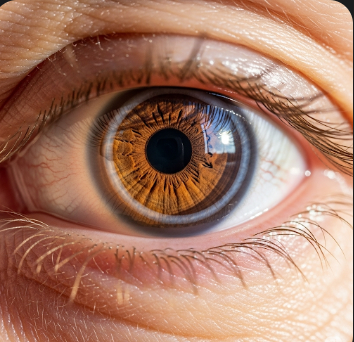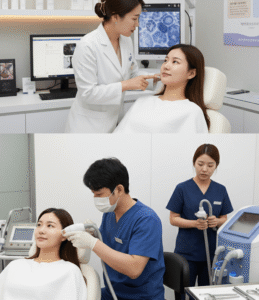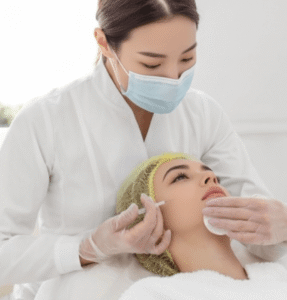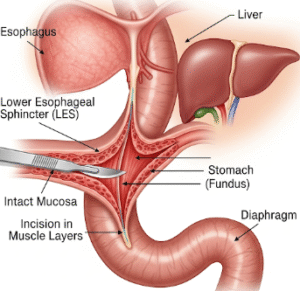Overview
Arcus Senilis is a condition characterized by a gray or white ring around the cornea of the eye, typically appearing near the edge of the iris. It is most commonly observed in older adults, usually over the age of 60, and is generally considered a benign sign of aging.
Although arcus senilis itself usually does not affect vision or cause discomfort, it can sometimes indicate elevated cholesterol or lipid disorders, particularly in younger adults. In South Korea, ophthalmology clinics and general healthcare providers can perform eye examinations, lipid screenings, and provide guidance on monitoring eye and cardiovascular health.
Key Facts
Highlights:
➡️ Arcus Senilis presents as a gray or white ring at the periphery of the cornea.
➡️ It is more common in older adults and is usually considered a normal aging change.
➡️ Can sometimes indicate high cholesterol or lipid disorders, especially in younger individuals.
➡️ Does not typically affect vision or cause pain.
➡️ Early detection of underlying lipid abnormalities is important to reduce cardiovascular risk.
What is Arcus Senilis?
Arcus Senilis is a corneal lipid deposition, where cholesterol, phospholipids, and other lipids accumulate in the peripheral cornea. It may appear as a thin, gray-white or bluish ring that is most noticeable near the iris.
Key characteristics include:
- Usually bilateral (affecting both eyes)
- Peripheral corneal involvement, sparing the central vision
- Slow development over years
- Common in both men and women over the age of 60
While typically harmless in the elderly, early onset (before age 40) can be a sign of familial hypercholesterolemia or other lipid metabolism disorders.
What Symptoms are Related to Arcus Senilis?
Arcus Senilis is usually asymptomatic, meaning most patients do not notice changes or discomfort. However, related observations can include:
- Gray, white, or bluish ring around the cornea
- Occasionally subtle cloudiness near the edge of the iris
- No impact on visual acuity or field of vision
- Possible cosmetic concern for some patients
- Rarely, associated lipid abnormalities may present with other systemic signs like xanthomas
What Causes / Possible Causes of Arcus Senilis?
Highlights:
➡️ Aging: Natural deposition of lipids in the cornea over time, most common in adults over 60.
➡️ Hyperlipidemia: Elevated cholesterol or triglycerides can accelerate the development of arcus senilis, particularly in younger adults.
➡️ Familial Hypercholesterolemia: Genetic lipid metabolism disorder causing early onset of corneal rings.
➡️ Cardiovascular Risk Factors: Hypertension, diabetes, obesity, and other metabolic disorders may correlate with corneal lipid deposits.
➡️ Systemic Conditions: Rarely, liver or kidney diseases affecting lipid metabolism can contribute.
When Should I See My Doctor?
Highlights:
➡️ If a gray or white ring appears in your eyes before the age of 40.
➡️ If there are additional signs of high cholesterol or lipid disorders, such as xanthomas, chest pain, or familial history of cardiovascular disease.
➡️ For routine eye examinations in older adults to monitor ocular health.
➡️ If cosmetic concerns or anxiety about eye appearance affect well-being.
➡️ For early assessment to reduce cardiovascular risk when associated with systemic lipid abnormalities.
➡️ To rule out other ocular conditions that may mimic arcus senilis.
Care and Treatment
Arcus Senilis itself does not require direct treatment, as it is typically benign in elderly individuals. Management focuses on underlying conditions and general eye health.
Highlights:
➡️ Lipid Screening: Blood tests to evaluate cholesterol and triglyceride levels.
➡️ Lifestyle Modifications: Healthy diet, regular exercise, and weight management to control lipid levels.
➡️ Medications: Statins or other lipid-lowering drugs if hypercholesterolemia or cardiovascular risk is present.
➡️ Regular Eye Exams: Monitoring for changes in the cornea, intraocular pressure, and general eye health.
➡️ Patient Education: Understanding that arcus senilis itself does not affect vision but may indicate systemic health conditions.
➡️ Cosmetic Counseling: Reassurance and optional aesthetic advice for concerned patients.
➡️ Follow-Up Care: Periodic evaluation for patients with early onset or systemic lipid disorders.
Treatment Options in Korea
South Korea offers comprehensive care for patients with arcus senilis and related systemic conditions:
Highlights:
➡️ Ophthalmology Clinics: Routine eye exams, corneal assessments, and visual health monitoring.
➡️ Cardiology and Lipid Clinics: Evaluation and management of hypercholesterolemia and cardiovascular risk factors.
➡️ Integrated Care: Collaboration between ophthalmologists, endocrinologists, and cardiologists for holistic management.
➡️ Lifestyle and Nutritional Counseling: Programs focused on diet, exercise, and healthy living to manage cholesterol.
➡️ Medication Management: Prescription and monitoring of statins or other lipid-lowering therapies.
➡️ Medical Tourism Support: Multilingual services, structured treatment packages, and follow-up care for international patients.
➡️ Patient Education: Guidance on eye health, systemic risk factors, and strategies for maintaining overall wellness.












